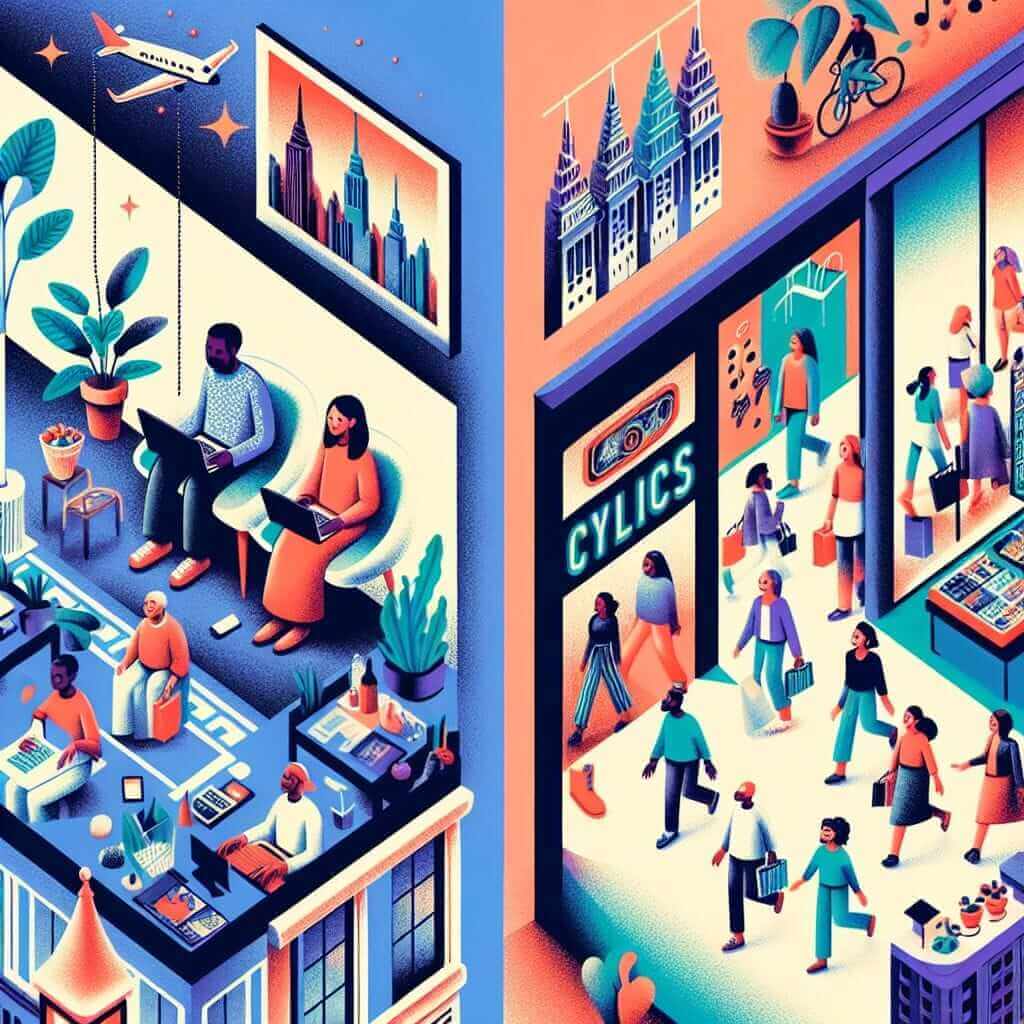The IELTS Reading section tests your comprehension and analytical skills through passages on various topics. One common topic is the impact of e-commerce on brick-and-mortar retail stores, which has been a popular theme due to its relevance in today’s digital age. The frequency of this topic is likely to remain high, considering the continuous evolution of online shopping trends.
In this article, we’ll provide a detailed practice reading test on “How does e-commerce affect brick-and-mortar retail stores?” along with questions and answers that mirror the actual IELTS exam format. This will help you prepare for your IELTS Reading test more effectively.
Practice Test: How Does E-commerce Affect Brick-and-Mortar Retail Stores?
Reading Passage
Section 1: E-commerce’s Rise
E-commerce has revolutionized the retail industry by offering consumers the ability to purchase goods and services online, breaking geographical boundaries. This shift from traditional shopping to e-commerce is primarily driven by convenience, a wider range of products, and often better prices. Major players such as Amazon, Alibaba, and eBay have become household names, shaping consumer behavior globally.
Section 2: Impact on Traditional Retail
The rise of e-commerce has led to significant challenges for brick-and-mortar stores. Many have experienced decreased foot traffic, leading to lower sales and, in severe cases, store closures. Retail giants like Macy’s and Toys ‘R’ Us have had to shut down numerous locations due to the shift in consumer shopping habits.

However, not all effects are negative. Some brick-and-mortar stores have embraced the digital revolution by creating online platforms or adopting omnichannel strategies, which integrate both online and physical store experiences. For instance, Walmart and Best Buy have successfully implemented such strategies to enhance customer satisfaction and drive sales.
Section 3: Future Outlook
The future of retail involves a blend of both e-commerce and physical stores. Retailers are increasingly leveraging technology in their physical stores to create better shopping experiences. Innovations like augmented reality (AR) for virtual try-ons, automated checkout systems, and personalized shopping experiences through data analytics are on the rise.
Traditional retail is not becoming obsolete but is rather evolving. Retailers who adapt to these changes can thrive in both online and offline markets.
Questions
Multiple Choice (Choose the correct answer)
-
What is one primary driver of the shift from traditional shopping to e-commerce?
- a) Limited product range
- b) Convenience
- c) High prices
- d) Geographical restrictions
-
Which online platforms are mentioned as major players in the e-commerce sector?
- a) Walmart, Macy’s, Best Buy
- b) Amazon, Alibaba, eBay
- c) Toys ‘R’ Us, Macy’s, Amazon
- d) Alibaba, Best Buy, Walmart
True/False/Not Given
-
Brick-and-mortar stores have not been affected by the rise of e-commerce.
- True
- False
- Not Given
-
Walmart has successfully adopted an omnichannel strategy.
- True
- False
- Not Given
Matching Information
-
Match the company with the corresponding strategy:
- A. Macy’s
- B. Best Buy
- C. Amazon
i) Completely online platform
ii) Had to shut down numerous locations
iii) Successfully implemented an omnichannel strategy
Sentence Completion
- Innovations like augmented reality (AR) are used in physical stores for ___.
Answer Key
- b) Convenience
- b) Amazon, Alibaba, eBay
- False – Many brick-and-mortar stores have experienced decreased foot traffic.
- True – Walmart has implemented omnichannel strategies.
-
- A. Macy’s – ii) Had to shut down numerous locations
- B. Best Buy – iii) Successfully implemented an omnichannel strategy
- C. Amazon – i) Completely online platform
- virtual try-ons
Common Mistakes in IELTS Reading
Many students struggle with the subtleties of True/False/Not Given questions. Often, a piece of information might seem true at first glance, but a closer read may indicate that it is not directly mentioned or is only implied. Practicing these types of questions can help improve your accuracy.
Vocabulary List
- Revolutionized (verb): /ˌrɛvə’luʃəˌnaɪzd/ – To completely change something.
- Omnichannel (adjective): /’ɑmnɪˌtʃænəl/ – Integrating multiple methods of shopping available to consumers.
- Augmented Reality (AR) (noun): /ɔgˈmɛntɪd rɪˈælɪti/ – Technology that superimposes a computer-generated image on a user’s view of the real world.
Grammar Focus
The Present Perfect Tense
Structure: [Subject] + have/has + past participle
Example: “Many brick-and-mortar stores have experienced decreased foot traffic.”
Usage: This tense is used to indicate actions that have occurred at an unspecified time or have relevance to the present.
Tips for High IELTS Reading Scores
- Skim and scan: Quickly look over the passage to get a general idea before delving into detailed reading.
- Time management: Allocate specific times for each section and stick to them. Don’t spend too long on any one question.
- Practice regularly: The more you practice, the more familiar you will become with the test format and question types.
By understanding the current trends in e-commerce and their impacts on traditional retail, you can prepare for similar topics in the IELTS Reading section and improve your chances of achieving a high score.